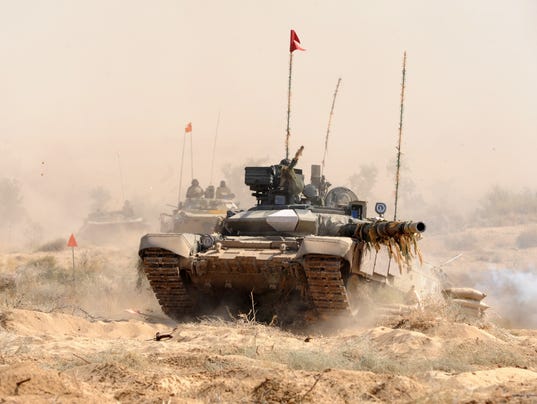BLACKEAGLE
SENIOR MEMBER

An Indian Army Arjun tank demolishes a bunker during an exercise in 2011.(Photo: SAM PANTHAKY/AFP/Getty Images)
NEW DELHI — Most of India's homemade Arjun Mark-1 battle tank fleet has been grounded because of technical snags and lack of imported components, an Indian Army official said.
"Nearly 75 percent of the 124 tanks with the Army are grounded," the official added.
The Army has inducted 124 Arjun Mark-1 tanks developed by the Defence Research and Development Organisation (DRDO) and produced by state-owned Heavy Vehicles Factory at Avadi in southern India. Nearly 55 percent of the value of the tank is imported components and those supplies have dried up, the official said.
The Army official did not give details of the technical snags but said there are more than 90 issues.
"The problems in the Arjun tank are mainly confined to its transmission system, targeting and thermal sights," the official added.
"There are a number of issues related to functionality due to imported components, which seem to be bugging the Arjun Mark-1 fleet for some time now. The technical snags have reportedly led to much of the fleet remaining non operational, creating a void in the tank strength of the Indian Army," said Rahul Bhonsle, a retired Indian Army brigadier general and defense analyst.
The Indian Army was forced to buy the 124 Arjuns by DRDO so that the Avadi factory would remain functional, the official said. He added that the Arjun Mark-1 has still not been cleared by the Army for combat because at 62 tons it is too heavy.
Meantime, DRDO has developed the Mark-2 version, which has received satisfactory marks from the Indian Army in comparison trials with the Russian T-90 main battle tank. The Mark-2 weighs less than 50 tons and has 93 improvements over the Mark-1, and includes nearly 60 percent indigenous components, claimed a DRDO official.
The Army has cleared 118 Mark-2 tanks.
"If the experience gained from Mark-1 is utilized fully there should be lesser technical problems with Mark-2 at present though reports of trials do not suggest the same," Bhonsle said.
The indigenous Arjun tank project began in 1974, and was originally aimed to replace Russian T-54 tanks, which have been retired, and more than 1,600 Russian T-72 tanks still in operation.
India Grounds Most of Original Arjun Tanks
